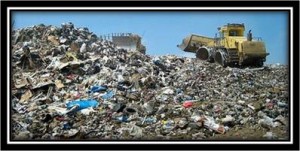With Black Friday and winter almost upon us, we find that the blizzard has already begun. No, not snow but catalogs.
The Catalogs Arrive
Every day another two or three of them land in our mailbox. I don’t buy much online but my husband does more. That means we receive catalogs from the companies we have purchased from as well as from related companies and any company to which they have sold their mailing list.
 This is the first round. Between now and Christmas we will receive multiple mailings from the same companies.
This is the first round. Between now and Christmas we will receive multiple mailings from the same companies.
Catalogs probably exist for every type of consumer product. We tend to get cookware, puzzles, clothing, books, toys, and random gift items. I assume that other families get catalogs for their interests, such cameras, stamps, hunting equipment, and baseball cards, as well as every sport and athletic activity known to human beings. Just imagine a product someone will buy and there will be a catalog to appeal to that interest.
Sometimes I stack our catalogs up in a brown supermarket bag until they fill it up and I have to start another one. Those bags are heavy.
Pandemic Catalogs
 This blizzard makes me think of all those people who ordered items they didn’t need or even want during the pandemic lock-down just for the excitement of having a delivery truck pull up to their driveway. Over the next few weeks, they will receive more catalogs in the mail than they can cope with.
This blizzard makes me think of all those people who ordered items they didn’t need or even want during the pandemic lock-down just for the excitement of having a delivery truck pull up to their driveway. Over the next few weeks, they will receive more catalogs in the mail than they can cope with.
I also think of how all those glossy, multi-colored, elegantly produced and expensively mailed little tributes to rampant consumerism end up, as they inevitably will, in the recycling bin or—worse—the landfill.
What a waste!
The Two Categories
But then it never ceases to amaze me what people spend their money on. Every week I take a break from writing to scan the upcoming estate sales. I rarely see anything I want (much less need) but sometimes a particular item will appeal. Then I may take the time to check it out. (Full disclosure: sometimes I just want to see the house. And I have seen some amazing houses.)
 More often, however, I sit in amazement at what is included in some sales. I can fit the reasons for the estate sales into two categories.
More often, however, I sit in amazement at what is included in some sales. I can fit the reasons for the estate sales into two categories.
- People are downsizing and have more of everything than they can fit into their new and smaller home.
- The owners have died and their kids are selling pretty much everything that was in the family home because they don’t want it.
Passions and Collections
Fair enough. The “stuff” that’s up for sale can include collections driven by a passion or, at the least, something that an owner really, really liked. If the passion was for stamps or baseball cards it won’t take up much house room. On the other hand, a passion for colored glass, sports memorabilia, wooden decoys and the like can fill whole rooms—or even whole houses.
Recently I encountered a seller with a passion for Elvis. I wanted to check out one non-Elvis thing so I took the time to visit. The house was packed with memorabilia from magazines and books to clothes, pins, posters and other artwork. Also, DVDs, records and statues. I didn’t know that much Elvis paraphernalia existed. Clearly the Elvis passion had taken over this person’s life. How much of his or her budget it consumed I can only imagine.
Self-Worth and Inanimate Objects
But I do know that the owner would have been a lot richer without the passion that drove the collection. They house would have been a lot cleaner, too. Hoarders are not known for Martha Stewart cleanliness. I got out of there real fast.
I do feel sad, however, that anyone could put so much of their time, effort, treasure and sense of self-worth into the acquisition of inanimate objects. As much as you love them, they will never love you back.
 I know of no way to prevent people from having passions or assembling a collection—not that I ever wanted one myself. The closest thing I have to a collection is the list of art museums I have visited around the world. Experiences mean more to me than objects.
I know of no way to prevent people from having passions or assembling a collection—not that I ever wanted one myself. The closest thing I have to a collection is the list of art museums I have visited around the world. Experiences mean more to me than objects.
I do think, however, that a hidden factor is the thrill of the hunt. Finding that one missing piece would drive many people to search for it, sometimes traveling miles to find it. Then, once it’s acquired, there is the momentary satisfaction of adding it to the collection. After that—on to the next piece.
In and Out the Door
 The catalogs arrive at our homes and goods come in the front door—bright, shiny and new. Years later, things go back out that door in the hands of others. Or a removal company takes it all to the dump, where it adds to the country’s burden of trash.
The catalogs arrive at our homes and goods come in the front door—bright, shiny and new. Years later, things go back out that door in the hands of others. Or a removal company takes it all to the dump, where it adds to the country’s burden of trash.
The American economy depends on consumers buying, buying, and buying. When you consider the pollution caused by manufacturing so many unnecessary products, the over-packaging for display and the more egregious over-packaging for shipping, the exhaust from trucks driving around neighborhoods every day, and the trash that piles up afterward, it’s no wonder that we have a problem with pollution and climate change.
What a system!
